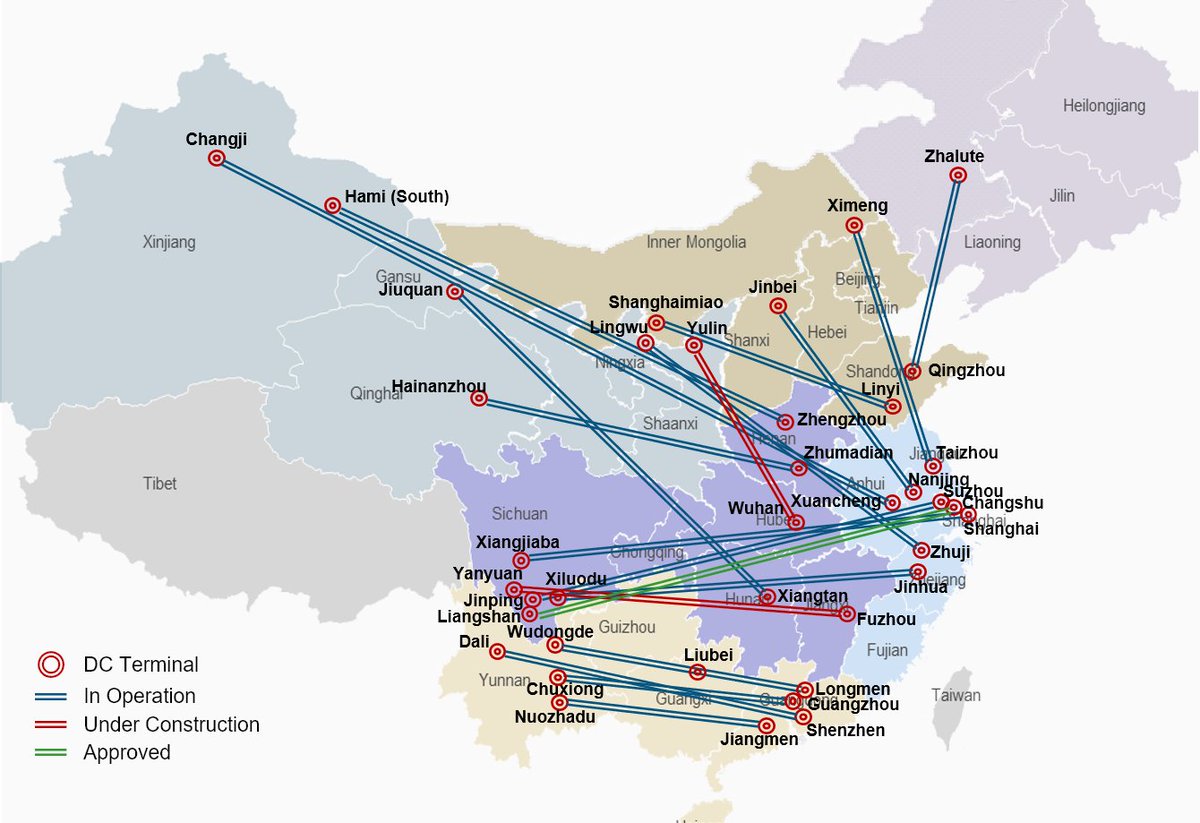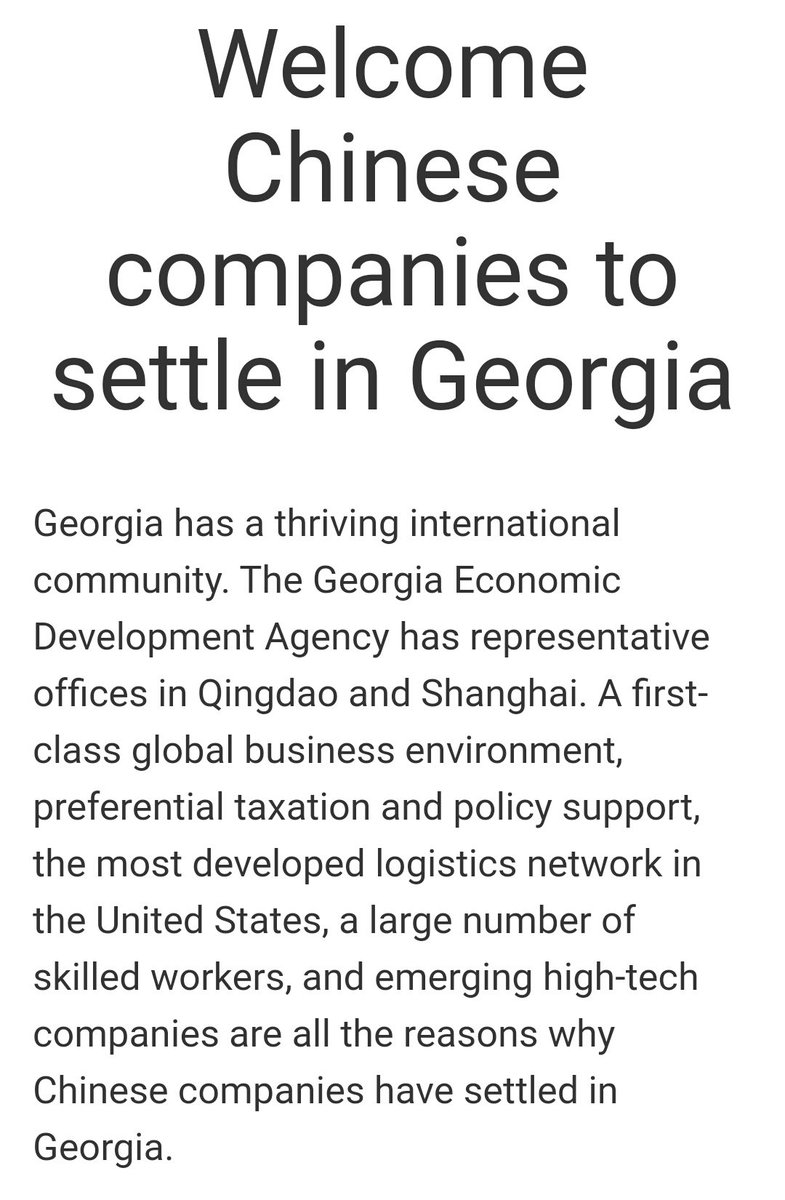2/14
In the rest of the world, UHV lines have generally been used sparingly. Submarine power cables (e.g. connecting UK to mainland Europe) and some huge hydropower projects in Quebec are some notable exceptions.
China is building UHV lines on a scale never seen before.
3/14
So why is China different? Geography plays a huge role. China's load centers are in the coastal East and South, while the best wind, solar, and hydro resources are in the North, Northwest, and Southwest. Power (esp. RE) is being generated far from where it's needed most.
4/14
In the past, poor regional interconnectivity has been a big contributor to low offtake levels of renewable energy. Of course a glut of coal power also played a role. Curtailment has improved in recent yrs tho. I discussed regional grids before:
https://t.co/FnxsXE4iV1
5/14
UHV lines provide a inter-region backbone to transport power hundreds or thousands of km across the country. The UHVDC lines are used for the longest distances, while UHVAC lines are used for shorter distances, often within the same regional grid.
China's UHVAC lines now:
6/14
In the image from the last tweet, you can see a red-circled area called the "Central China Ring Network". This is planned grid of UHVAC lines that would link up different major cities in Central China and also connect the North, Central, and East Grids.
It's controversial.
7/14
The reason it's controversial is:
1. Overconnectivity could mean susceptibility to cascading grid failure if a substation or a power plant trips
2. The regulator thinks the economics for these lines is not good enough and won't approve SG's application to build them.
8/14
So far, China's UHV lines have generally had low utilization rates vs. nameplate capacity. The reasons for this vary, but are usually one of:
1. No one wants/needs the power
2. The local grid can't handle the UHVDC volume and needs to build more UHVAC
3. Low generation
9/14
#1 above is especially a problem. Usually provinces want to prioritize local generated power rather than power 'imported' from other provinces. The UHV line power is supposed to get priority dispatch, but local interests are powerful and local coal may be dispatched instead.
10/14
But progress on the Central China Ring Network is forging ahead, even with local gov't and coal stakeholder opposition. Just yesterday, another link of the Ring Network was approved to start construction. Late, but better than never.
https://t.co/FpXEkuFMWR
11/14
UHV is a critical aid for many other objectives in China's power sector reform:
1. Allowing trading of renewables in wholesale power markets
2. Setting more strict renewable uptake targets for provinces
3. Creating options for I&C customers to procure green power
12/14
Of course, that's not to say that UHV lines carry RE exclusively. In fact, most of them carry coal power too. But the options that are opened up for green power procurement by transporting RE from other parts of the country are really exciting.
13/14
(If you're interesting in learning more about C&I green power procurement and tracking China's progress toward creating more green power procurement options, I highly recommend following the work of the Rocky Mountain Institute
@RockyMtnInst)
14/14
This massive public infrastructure UHV project makes very little sense in pure economic terms - like highspeed rail. Some lines will likely NEVER pay for themselves. They aren't supposed to. They are public goods, preparing for China's carbon-neutral future.
PS:
There are tons of details, nuance, and tangents that I haven't mentioned in here. I'm about to publish a 15-page white paper on the subject and even that barely scratches the surface.
If there are questions, I can try to answer some, insofar as I know the answers. 🥸
P.P.S.
If anyone would like to use either of the maps in this thread for your work, please contact me directly for proper attribution. These are in-house resources produced specifically for my publication.





















